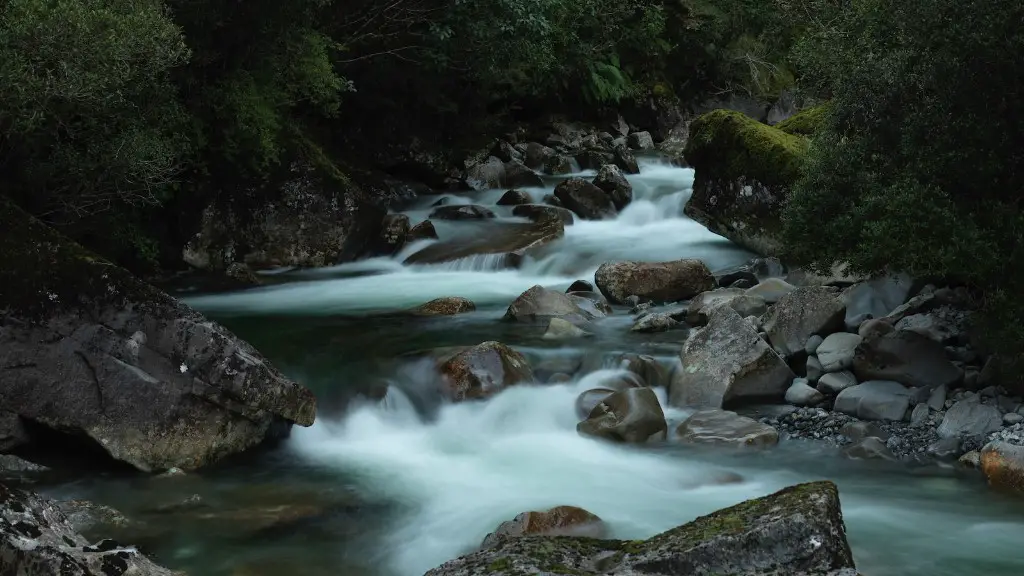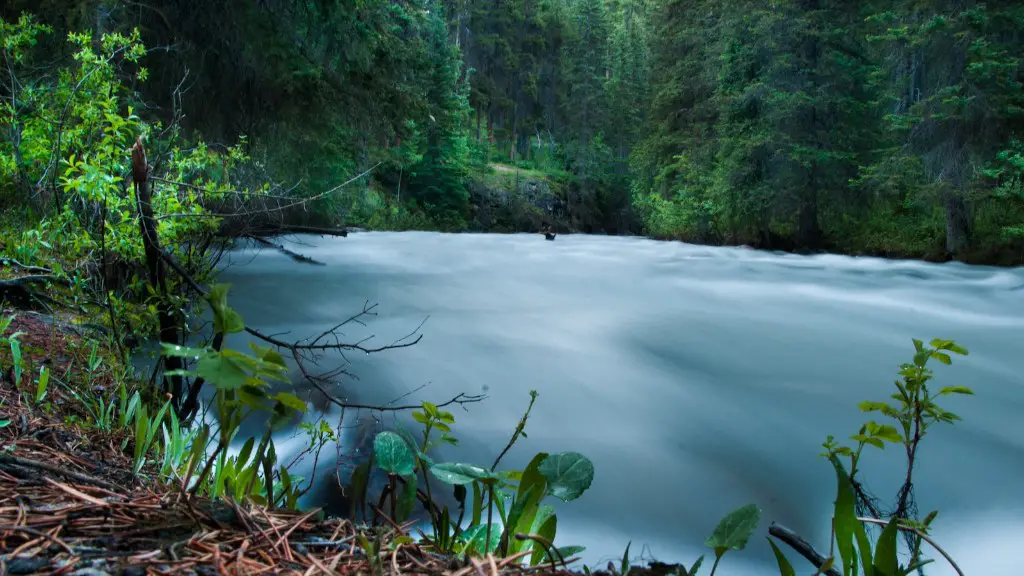The Mississippi River is a major waterway that serves many purposes for people near and far. Spanning about 2,320 miles, the Mississippi is the longest river in the United States and is one of the most important rivers in the world. Last year, the river was at its lowest level since the 1950s. From water supplies and transportation of goods to recreation, low river levels pose risks to numerous entities.
Due to high flood levels in 1993, the US Army Corps of Engineers constructed levees and restructured the river with a series of control structures. Since then, USACE’s management of the river’s flow, combined with drought conditions and rapid drawdowns of the river’s reservoirs, have caused its water levels to significantly drop resulting in heavily diminished barge transportation. This means that barges, which are typically used to transport about 60% of the region’s grain exports, are now inoperable because their craft is too shallow in certain areas.
Each state along the Mississippi is affected by the lower levels differently. For instance, states like Louisiana rely more on recreation and oil and gas production, which is not as significantly impacted. On the other hand, states like Arkansas and Missouri that rely more on barge transportation and drinking water from the river are more affected. For example, a city like Vicksburg, Mississippi that heavily depends on barge transportation to transport its products downstream, is forced to use trucks as an alternative due to the low water levels.
Although the river is likely to rebound, the USACE and various experts and stakeholders advocate for comprehensive, long-term strategies to restore and preserve the river’s level. According to Jo-Ellen Darcy, former assistant secretary of the Army for Civil Works, “It is important to safeguard this vital piece of economic infrastructure so our citizens and communities along the Mississippi River have the assurance of knowing the water is available to go up and down the river, enabling commerce and protecting human life”. She goes on to say that “we (USACE) must address the issue of low levels on the Mississippi as part of an integrated and sustainable rivers management program for the Missouri and the Mississippi”.
As the situation continues to evolve, leaders of the Mississippi River Commission (MRC) and the Mississippi River Cities & Towns Initiative organizations are working together to ensure the river is used to its full potential, in a prudent and sustainable manner. MRC President Gen. Jeffery B. Sorenson stated that “We must protect this great natural resource and move quickly to restore the health and viability of the nation’s inland waterways”. By leveraging best practices, they are looking to increase collaboration, sharpen focus, and adapt to changing conditions.
At the same time, the USACE has proposed an array of integrated solutions that aim to modernize and improve aquatic, ecological, and navigation performance of the river. Aside from the traditional approaches, this includes building and assessing the impact of various alternative strategies like dredging and dewatering projects. Lastly, the USACE is heavily relying on their customers’ input and feedback to help prioritize their strategies and identify the best solutions.
Environmental Impacts of Low River Levels
The low water levels of the Mississippi River present both environmental and economic consequences, largely because of the drastic decline in barge transportation. Due to the disruption of shipping, states must use more expensive and fuel-inefficient ground transportation options like trucks and railcars instead. This results in more traffic and air pollution, polluting the air, the land, and waterways.
Moreover, in states like Illinois, parts of the river are drying up, which causes its aquatic habitat to lessen and alters its food chain. This has a negative effect on the proximity and availability of species of fish, birds and other water-dwelling creatures. Migratory birds, in particular, are depending on the river now as they travel north in search of food in the spring and back south in the fall, which has proven to be difficult due to the low water levels.
In addition, the lack of water causes salt to seep through in states like Louisiana, further disrupting the river’s habitat. This sets off a chain reaction and causes plants and trees that rely on water and a healthy ecosystem to wither and die. Furthermore, communities and businesses that depend on the river for its natural resources, such as drinking water, are affected as well and are highly vulnerable to the increase of pollutants.
Implications on Water Quality
The Mississippi River carries water and air pollution from numerous sources such as wastewater treatment plants, agricultural runoff, stormwater, and industrial byproducts. The various sources of pollution are difficult to regulate as they span many states and industries, compounded with low water levels that act as a source of transportation of the pollutants through the river.
Moreover, in states like Louisiana and Arkansas, which are home to the majority of the river’s navigation locks, the number of navigation lock chamber flushes is decreased due the low water levels. This worsens the water quality issue due to the stagnation of pollutants from the upstream areas without flushing it downstream.
In response to this issue, the USACE has implemented measures to reduce nutrient loading, such as using physical barriers like barriers for algae blooms, and dissolved oxygen management to improve water clarity. Furthermore, the agency has collaborated with various industry and NGO stakeholders to develop solutions to improve water quality.
Nevertheless, the implications of low water levels and the inability to operate barge transportation have likewise diminished economic growth and development. The river supports the export of goods and services out of the US, which in turn facilitates income, jobs, and opportunities.
Effects on Economies
The Mississippi River is crucial to the agriculture and transport of goods in the region. It serves as the most economical option to transport goods upstream, while it enables US exports. Trade from all parts of the river’s basin supports almost 8 million jobs across all industries, with barge transportand food, granc, feed and fertilizer production having the most direct reliance.
The disruption of transportation due to low river levels forces local businesses, especially farms and facilities downstream, to look for other means of transportation. This includes costly ground transportation, and in some cases, may require re-routing of goods to alternative routes, such as the Gulf of Mexico, adding higher expenses and a longer route for delivery.
In addition, a study by the US Department of Commerce’s Bureau of Economic Analysis showed that counties near the banks of the river have the highest economic growth in the region. The study further demonstrates that their largest industries are farming, forestry, fishing, and manufacturing, indicating a large reliance on the river for economic growth and development.
Therefore, it is evident that the ripple effect of the low Mississippi River water levels have caused damage to the environment, water quality, and regional economy. It is essential that we as a society take action to conserve resources and look for solutions to secure sustainable and long-term access to transportation methods in the Mississippi River basin.
Solutions for Water Restoration
To address the issue of Mississippi River water levels, the USACE is running an integrated and economically efficient system that integrates the following solutions: dredging and widening rivers and channels, increasing storage capacity, reservoir dredging, and increasing upstream storage.
Furthermore, the agency is actively carrying out public engagement campaigns and working with state and local partners to discuss alternative solutions that consider climate resilience and environmental quality. Such solutions include using a range of alternative flood mitigation and habitat restoration tools, increasing looser hydrological connections between different watersheds, and creating alternative ways to reduce flooding risks.
The USACE is also leading the charge in promoting research on the latest development in river hydrology, operations, and optimization. Through its research portfolio, the agency is studying methods to restore the river and its estuary, provide larger-scale opportunities for improved water quality, and providing analysis of the impacts of various proposed hydrologic operations.
In addition, the USACE is actively leveraging digital technologies to optimize water operations. By leveraging large-scale data-driven analyses and advanced computing power, the agency is looking to harness the latest technologies, such as artificial intelligence and machine learning, to develop innovative solutions for the Mississippi River.
Future of the Mississippi River
Ultimately, restoring and preserving the Mississippi River will ensure the health of the entire region. The USACE and its partners are working diligently to address the issue of low water levels and create solutions that will improve the state of the river.
This includes developing more extreme weather and drought-resistant flow regimes, researching the effects of climate change on the river’s watershed, and continuing to coordinate with the various agencies and stakeholders on the Mississippi to further the principle of integrated and sustainable water management solutions.
The long-term success of restoring the river will require a regional and comprehensive approach that takes into consideration the health of the entire Mississippi River basin, from its headwaters in northern Minnesota to the valleys of Louisiana. Additionally, the comprehensive strategies must be implemented on a local, state, and national level in order to successfully restore and preserve the Mississippi River.





